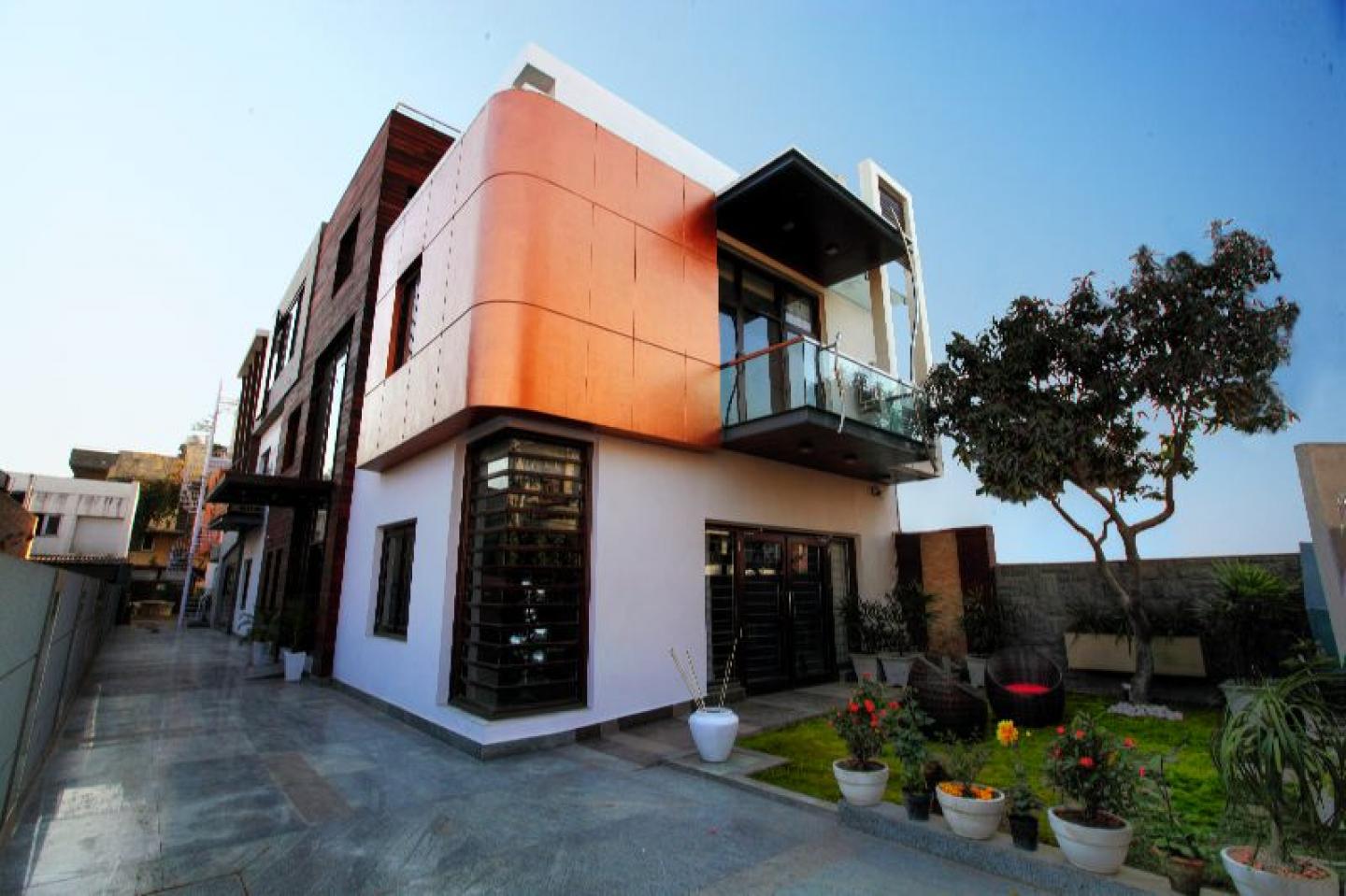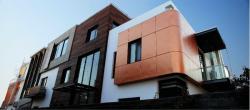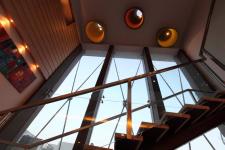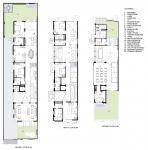Project’s house is the accomplishment of a dream which is to have a house to which we can relate. It is precisely thinking of the accomplishment of dreams that the role of the Architect reveals an extreme importance, for he is the one that has to make the accurate interpretation of a client’s dreams, sometimes confuse, that reveal the true essence of each person and the way that they would like to experience their space. This process of decoding a dream wasn’t understood as a limitation to the creative freedom of the architects. On the contrary, it was understood as a combining course which leads to exquisite discoveries CONCEPT The project attitude derived from an interpretation of the history and the place looking for spaces with real character that could adapt to the demands of the contemporary life. There was the need to find a solution that could empower the use of materials, carefully harmonized with the intent of providing distinguished emotions and motions. The concept of the project focused on the idea of looking for an experience in which the spaces work as a prolonging of the human being, protecting the human expectative the presented proposal. The proposal had to be a container of real life, the costumer’s life. The house shows us the expression of an idea in a unique space moment, when we use the work throughout a sensorial course, distributed to serve the functional programme. The design processes started with paper folding, to explore the possible spatial dynamics by dissecting a box, and displace the parts into multiple planes of alternating solids and voids. This was later developed, together with scaled drawings, and with a series of mock-ups. On plan and section, the displaced shells generated juxtaposed spaces, displacing the interior/exterior boundaries, and optimizing day-lighting and natural ventilations. An attempt has been made to make the exterior landscape garden as part of the interior space. The rectangular plot size of 37’ x 150‘ situated on busy bylanes of NewDelhi. The usual plot size meant for single family of 6 people, husband and wife with two children and parents was highlighted into the development of the project. The plan is perceived as three parallel layers arranged along north south direction, a series of double height, courtyards, water bodies, landscape elements enhance the quality of indoor space and connects different levels. Foremost emphasis was given to maximize natural light into the house and connects different levels of the house and to minimize the longitudinal width of the plot. The ground floor has drawing, dining, kitchen with guest bedroom and parent’s room, entire lobby. The first floor has 3 bedrooms, 1 for master bedroom and 2 bedrooms for kids, the third floor has party hall with terrace garden. One enters the house from the entrance double height lobby which connects to the first floor space .The big glass windows lighten up the whole area. The drawing room is placed in front overlooking green lawn. The interesting element is the overall composition of spaces in the processional route that connects the spaces; on turning left an Informal lounge triple height connects the entire three floors. The highlight of the house is the waterbody where sitting Buddha has water curtain flowing in the pool below. The space is in contrast to other spaces thus create transition, a space which connects to all the others creates dramatic atmosphere by the playful entry of lights reflected throughout the wooden pergola and the triple height wall and also into the pool, which is further highlighted by concealed lights in the pool. The sound and feel of water is sublime, it touches one’s sense transforming one to another world. The water body also acts as transitional space between informal lounge and the dining. The dining and kitchen placed near each other and the open kitchen has window allowing lights into the dining area. The family lounge is placed further connecting to the parent room, the parents room has foldable door pads which when open creates one space. The family lounge is connected by double height to family lounge on the first floor. The family lounge has 10 feet height slides and folded doors which give away to the rear green lawn. The house connects horizontally to both the front and rear lawn visually. The openable doors in the north and south direction permits prevailing monsoon to naturally ventilate the house. One leads from the continued wooden steps to first floor with different spatial experiences. A passage connects the front master bedroom and the entrance lobby below, which attracts light from windows at the entrance. The vertical window in the master bedroom gives the view of all the three floors. The family lounge placed at the other end has metal staircase leading to the second floor. The two children bedrooms are placed along the side. The second floor has been kept for entertainment with terrace garden at both front and rear. The straight feature of the house is the total indigestion of the interior and exterior spaces and intensity instilled into the design. In this way, the house embraces a rich variety of spatial experiences. The design of the house and the landscape employ a number of key sustainable design strategies to ensure minimum maintenance, low energy using low water use and low embodied energy.
The building has been perceived as a modern house where emphasis has been given to lot of detailing and use of materials. As a rectangular block the massing was a challenge, the front corner elevation has a copper painted block balanced by a rectangular framed structure in front of the first floor balcony. The simple front exterior has a contrast use of elements and texture on the side where wooden cladding above entrance lobby continues and connected to the second floor at the front elevation. Similarly cement finish block protrude out from the second floor with big sliding windows. Perforated vertical wooden panels break the monotony and create interest and are replicated at the first floor balcony below. The staircase wall has double height windows panels with precast column and a customized metal frame supports glass and creates visual delight to the eye. The copper paint on the angled block at the rear complemented to the front one. The yellow ochre paint on the front of the servant room is framed by beam structure; highlights the building at rear. The rear elevation has big glass panels where in a cantilever glass platform extends from first floor act as balcony overlooking the private lawn.
ENVIRONMENTAL CONCERN ADDRESSED IN DESIGNING THE HOUSE 1. Natural light through cutouts and big windows reduces the electricity consumption
tremendously. 2. Ventilation through electrical operated exhaust fans at the triple height helps to induce ventilation using the “stack effect”. 3. The openable/sliding doors in north & south direction permits prevailing monsoon to naturally ventilate the house. 4. 4 * Rated appliances are used throughout the house. 5. Solar panels are used for hot water usage.
6. Maximum use of LED & CFL reduces electricity consumption. 7. Use of water based stains and paints and minimum use of PVC and adhesive throughout with low VOCs (Volatile Organic Compounds) to minimize toxic gas emission. 8. Water efficient shower and tap fittings, washing machine and dish washer are used. 9. 15,000 liters of rainwater tanks used. 10. Open terrace garden at upper level takes maximum advantage of available freeze with northern aspect at the same time helps in heat and insulation to lower floors.
2008
2010
SITE- 37X150
LOCATION-NEW DELHI
KAPIL AGGARWAL
NIKHIL KANT










